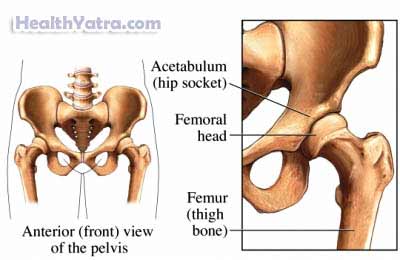Definition
Legg-Calve-Perthes disease (LCPD) is a rare hip disease. It affects children 2-12 years old. LCPD is a disorder of the top of the leg bone. The disorder interrupts blood flow to the hip. The loss of flow impairs bone growth and causes deformity. Over time, the bone breaks and reforms causing the child to limp. LCPD most often occurs in just one hip, with only about 10% of cases involving both sides.

Causes
The cause of LCPD is unknown. Infection, trauma, and inflammatory processes are possible causes.
Risk Factors
Factors that may increase your child’s chance of developing LCPD include:
- Small or short for age
- Delayed bone age
- Athletic, active child
- Race: Asian, White, Eskimo
- Secondhand smoke exposure
- Sex: Male
- Age: 4-8 years
- Blood clotting abnormalities
Symptoms
The primary symptom of LCPD is a limp when walking. This can occur in children 2-12 years old. It peaks in children 4-8 years old. Other symptoms may include:
- Hip pain
- Groin, thigh, or knee pain
- Reduced range of motion in the hip
- Shortening of the leg, or legs that are not the same length
- Muscle weakness in the upper thigh
Diagnosis
Your doctor will ask about your child’s symptoms and medical history. A physical exam will be done. During the exam, your child’s hip will be examined to see how far it can move. The doctor may refer your child to a specialist. An orthopedist focuses on bones and joints.
Images may need to be taken of your child’s bones. This can be done with:
- X-ray
- Magnetic resonance imaging (MRI) scan
Treatment
Talk with your doctor about the best plan for you. Options include the following:
Physical Therapy
If your child’s symptoms are mild, your doctor may prescribe physical therapy. A therapist will work with your child to maintain range of motion. You may be taught certain exercises to do with your child at home.
Medical Treatment
Medical treatment is used to prevent further injury to the hip. It may include using crutches , traction, a brace, or cast.
Surgery
In some cases, your child may need surgery. Bone removal may be done to reposition or reshape the hip bone.
Prevention
There are no known ways to prevent this rare disease.
